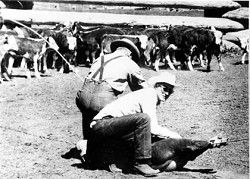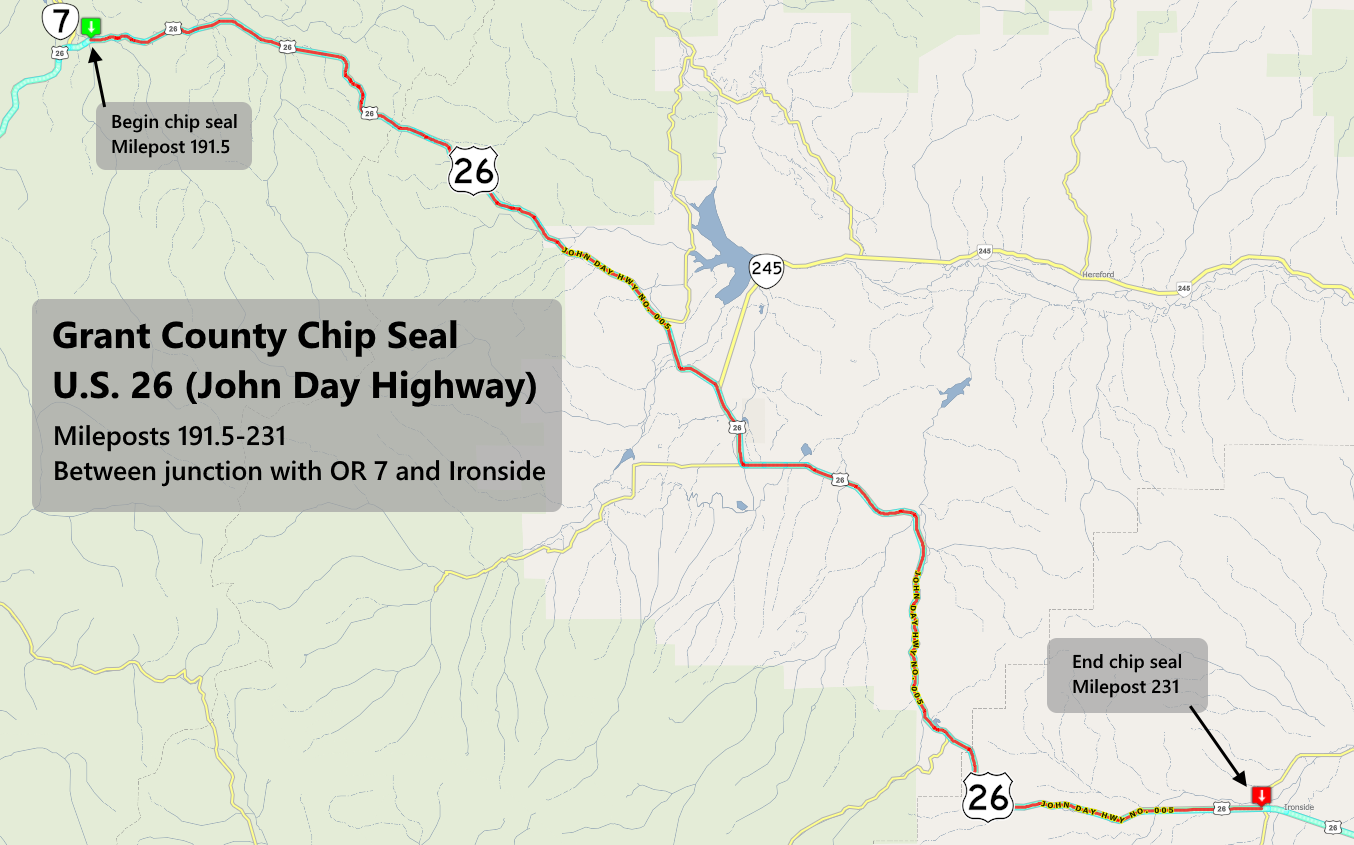Taylor Act regulates grazing on federal lands
Published 5:00 pm Tuesday, August 29, 2006

- <I>Contributed/Officer Family Collection</I><BR>Joe Officer and Wade Officer brand cattle at the Sproul Ranch.
Public-lands ranching attracts speculators. Ranchers fence public territory with barbed wire, fight for water sources. Act issues limited number of grazing permits.
The history of public-lands grazing in Oregon begins with the introduction of cattle in the American West.
Modern breeds of domestic cattle descended from a single ancestor, the aurochs, which migrated from Asia to Europe about 250,000 years ago. About a foot taller than today’s cows, the animals are thought to have been rather fierce compared to their genetic relatives. Thankfully, domestication brought significant physiological changes in size and temperament, and today’s cows tend to be more docile.
Our word “cattle” derives from the latin “caput,” meaning “head,” and the French “chattel,” or a unit of property. It’s easy to see how the usage developed. We still call cattle “head,” and livestock were referred to in the Old Testament as one of the earliest forms of property for barter. The Saxons brought cows with them when they conquered Britain, along with the cattlemen’s skills enmeshed in their culture. They cooked their beef on sticks over their campfire, our word “steak” coming from their “steik,” meaning “meat on a stick.”
Cows remained in Britain, and the first head came to America in 1623: two Devon heifers and a Devon bull, imported to the Plymouth colony. Shorthorns first arrived in 1783, furnishing milk, meat, and labor when they were introduced in Virginia. Bovine labor would eventually be replaced by equine labor once horses were widespread across the colonies, but cattle remain a staple food source today.
By 1817, Herefords were being bred in Kentucky, and longhorns were in Texas soon after. Trails dispersed cattle from Texas across the West, and ranching became an economic force during the post-Civil War years, when ranchers moved their herds freely throughout open federal lands. Between 1886 and 1890, harsh winter conditions forced ranchers to summer their cattle on federal lands and move them to home ranches where food could be stored. Eventually, this became the standard method.
Since public-lands ranching was an extremely low-overhead business and the range was vast and unregulated, there was no limit to the speculators it attracted. By 1900, 19.6 million beef cattle and 25.1 million sheep dotted the 17 western states, and conditions on the ranges became severely degraded from overuse.
To preserve the land, ranchers began to fence in public territory with barbed wire and fought to control valuable water sources, often resorting to fraudulent title claims on springs and streams. Water was crucial to maintaining a herd, and by restricting access, they hoped to limit the encroachment of new operations. These measures were inadequate, however, to combat the growing overpopulation that plagued the range, and Congress was compelled to intervene.
The Taylor Grazing Act of 1934 was the first federal edict to regulate grazing on federal lands, authorizing the Secretary of the Interior to establish grazing districts on vacant, unappropriated, and unreserved lands adjudged to be “chiefly valuable for grazing,” while also stipulating that the Secretary would provide for the protection and regulation of these areas. The text of the act recognized that the environment was sensitive to the effects of domestic livestock, and that the secretary should monitor soil erosion in riparian areas and oversee their rehabilitation when required.
Limited numbers of grazing permits were issued at nominal fees, and those ranchers denied the privilege compressed their operations back onto private lands. Often the increased overhead from land and lease prices forced them to sell out, but as desired, the overall number of cattle on federal rangelands declined substantially. Ranchers who received permits enjoyed increased stability in their operations, and permit fees were designated for range improvements that bolstered the land’s sustainability.
What the Taylor Act failed to anticipate was an increase in multiple use. Natural resource conservation has continually raised the question of whether areas once designated “chiefly valuable for grazing” really were, and conservation efforts have threatened to supplant grazing as the most viable use of these lands. Government environmental regulations have hindered public-lands grazers in the interests of habitat, endangered species, and riparian management, among other issues, and the increased protections have frustrated ranchers by compelling them to institute updated grazing practices to comply with the rules of a changing social climate.
The ’80s and ’90s saw the Bureau of Land Management working to institute changes in grazing practices, and ranchers cooperated reluctantly until they saw the benefits for themselves. At Bear Creek near Prineville, a battered streambed was repaired over a 15-year period by switching to a shorter grazing season. Trout returned to the stream that grew from 3.8 acres per mile to almost 12 acres per mile, and forage levels increased drastically. Short periods of grazing, as opposed to none, actually stimulated the growth of vegetation. It became apparent that updated practices could allow wildlife and cattle to coexist with minimal environmental effects.
Cooperation was voluntary, however, and many ranchers resisted the changes. The sacrifice in grazing time and area was too much for them to sustain, and environmental groups railed against the glacial pace at which reforms were put in place. Countless lawsuits were filed and continue to this day, with federal agencies entrusted with stewardship of the lands also targeted for alleged failures at multiple- use management. Environmentalists have drawn the conclusion that grazing regulations are helpless to stop the perceived cattle scourge, and anything less than ranchers’ compulsory exit from public lands is inadequate.
The BLM’s few successes show that compromise is possible. Updated regulations are the next phase in the Taylor Act’s legacy, the thrust of which was the successful management, not elimination, of cattle populations on public lands. Management has not failed, but its scope has been too narrow. Closely monitored and limited grazing seasons have allowed cattle to graze public lands without excessive environmental harm, and environmentalists should work with federal agencies to implement reforms such as those before antagonizing ranchers with lawsuits. It is the responsibilty of the federal government to assure proper stewardship of federal lands, and the responsibility of ranchers to comply.
? This article was written with information from the Bureau of Land Management, the Oregonian, Wikipedia, and CyberSpace Agriculture.






